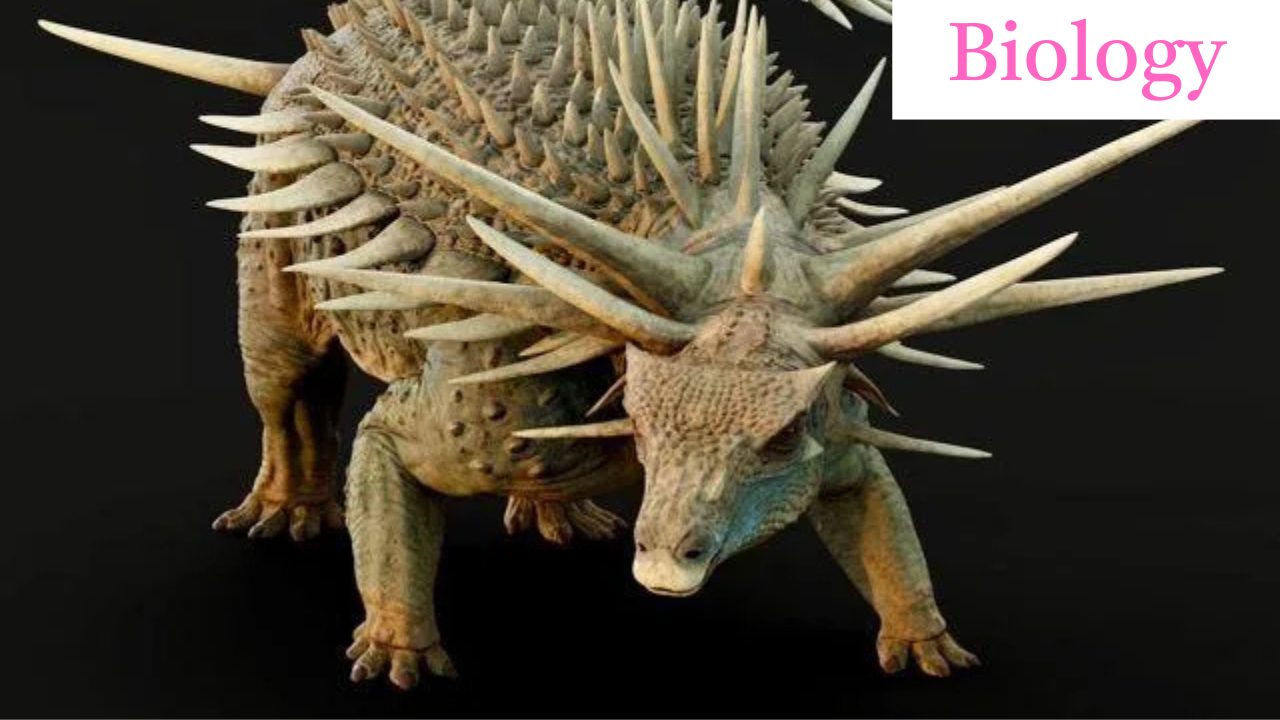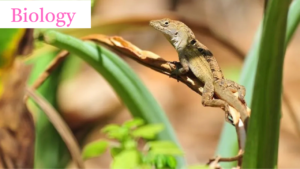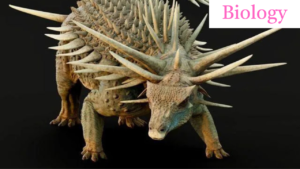Dinosaur, the common name given to a group of reptiles, often very large, that first appeared roughly 245 million years ago (near the beginning of the Middle Triassic Epoch) and thrived worldwide for nearly 180 million years. Most died out by the end of the Cretaceous Period, about 66 million years ago, but many lines of evidence now show that one lineage evolved into birds about 155 million years ago.
Numerous studies have been conducted on dinosaurs, and scientists are uncovering various types that once roamed the Earth. Recently, a peculiar armoured dinosaur was discovered, featuring metre-long spikes protruding from its neck, as reported by BBC.
This species, known as Spicomellus afer, existed 165 million years ago and represents the oldest known example of a group of armoured dinosaurs referred to as ankylosaurs. The complexity and spiky nature of the specimen found in Morocco have surprised experts, prompting a reevaluation of the evolutionary history of these armoured dinosaurs. The discovery was made by a local farmer in what is now the Moroccan town of Boulemane, marking it as the first ankylosaur identified on the African continent. Professor Butler recalls the moment he first encountered the fossils.
Ankylosaurs, characterized by their stout, armored physiques and peculiar, weaponized tails, represent a notable category of dinosaurs. Although numerous species existed during the Cretaceous period, it is believed that their origins can be traced back to the Jurassic era. However, it has been challenging to ascertain much about these origins due to the limited fossil evidence available. One of the earliest possible ankylosaur species, Spicomellus, is known from merely a single partial rib; other specimens are recognized solely by jaw fragments or teeth.
Interestingly, the robust armor and rows of thick spikes observed on Cretaceous ankylosaurs were actually less pronounced compared to the extensive rows of meter-long spikes and bony collars seen on Spicomellus. The appearance of Spicomellus resembles a fusion of punk aesthetics with the flamboyance of glam, resulting in a truly unique dinosaur. Cretaceous ankylosaurs exhibit several shared characteristics. One such feature is their short, broad body shape, which allowed these herbivores to remain close to the ground while on all fours. Another common trait is the presence of bony plates, derived from the skin, which served as a form of body armor for the animal. Some of these plates, particularly along the ribs, developed into short, blunt spikes that offered additional protection. Lastly, many species possessed tails that culminated in club-like structures, which were connected to the vertebrae in the tail through components referred to as “handles.”
These creatures thrived well into the era when dinosaurs roamed the Earth, specifically during the Cretaceous period, which spanned from 145 to 66 million years ago.
The conclusion of this era witnessed the rise of large carnivorous predators, including T. Rex. It was previously believed that ankylosaurs began with basic small armored plates on their backs, which subsequently grew larger and more extensive to defend against these formidable creatures, as stated by Prof. Butler.
Although the researchers lack sufficient skeletal remains to ascertain the animal’s proportions, they estimate it would have measured approximately four meters in length and one meter in height, with a weight of around two tonnes.
This discovery suggests the possibility that ankylosaurs may have initially possessed intricate armor during an earlier dinosaur epoch, known as the Jurassic, which evolved over tens of millions of years into a more simplified and potentially more functional form, according to Prof. Maidment.
“Our speculation is that these structures might have been utilized for display purposes, and it was only later in the Cretaceous, when we began to observe enormous dinosaurs with massive jaws and crushing bites, that they actually needed to repurpose these display structures as protective armor.”
Prof. Driss Ouarhache, who led the Moroccan research team from Université Sidi Mohamed Ben Abdellah, remarked: “This study is advancing Moroccan science. We have never encountered dinosaurs of this nature before, and there remains much more that this region can reveal.”
Source: BBC, Arstechnica, Newscientist










